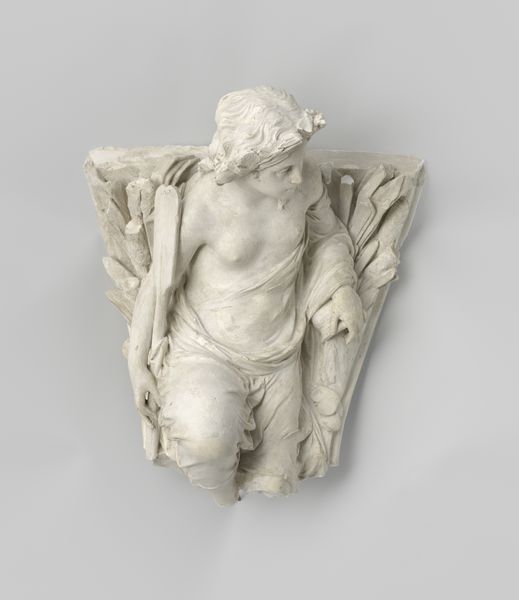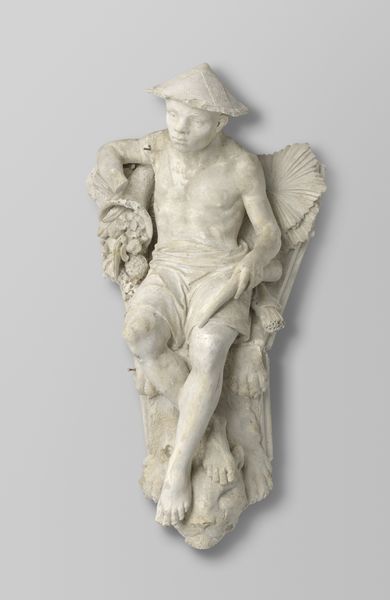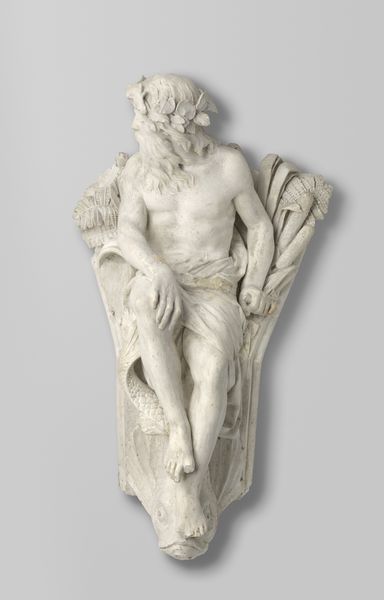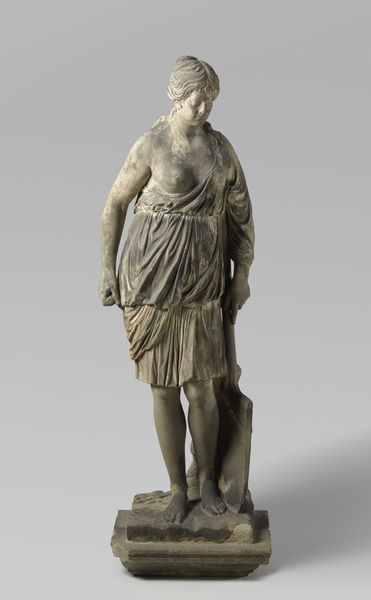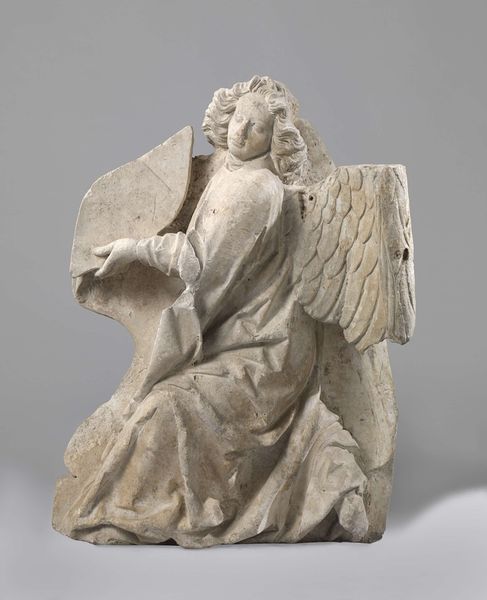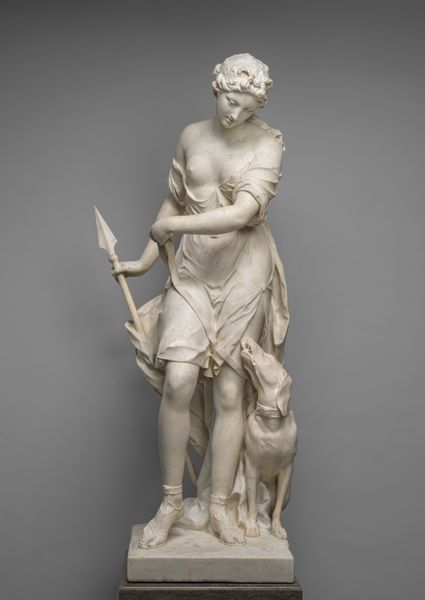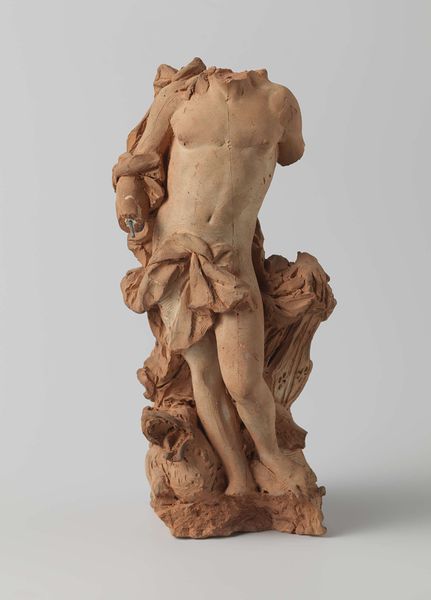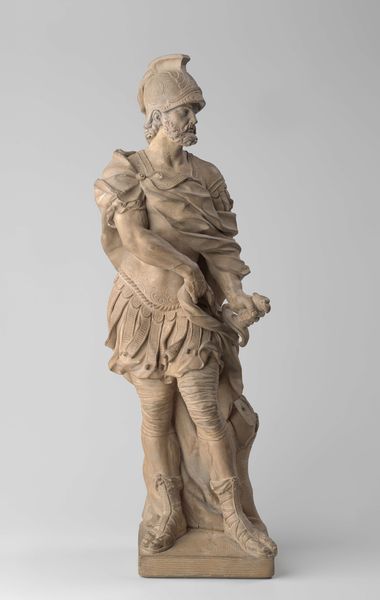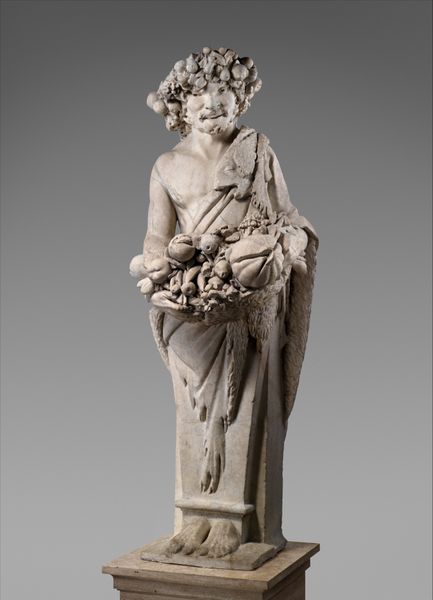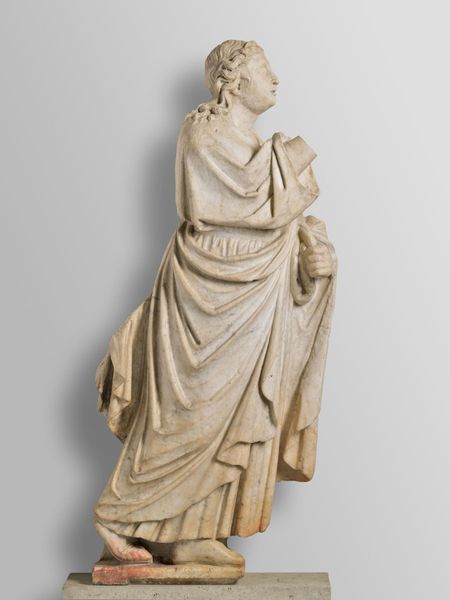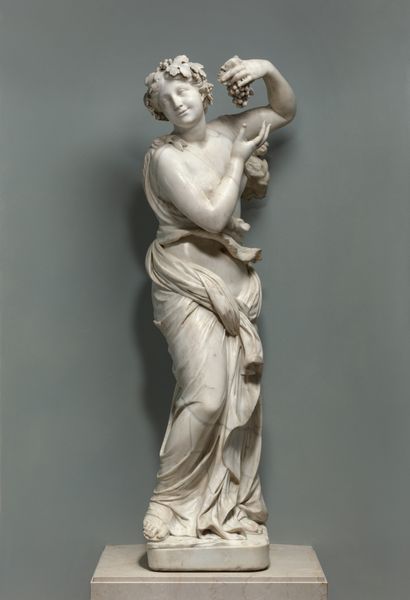
Dimensions: height 60 cm, width 35 cm, depth 25 cm, weight 9.7 kg
Copyright: Rijks Museum: Open Domain
This plaster sculpture of a woman holding a shield was made by Frans Stracké, a Dutch sculptor who lived in the 19th century. The fragment is filled with references to the House of Orange, which played a central role in Dutch history and politics. During the 19th century, there was a desire to unite the country under a shared national identity with historical symbols, but this risked excluding or misrepresenting segments of the population. The statue is thus a direct reference to Dutch national identity, gendered female. The woman holds the coat of arms of the Netherlands, symbolizing power and authority. The draped clothing, the bare foot, and the wreath of leaves have classical precedents, but how might these affect our understanding of Dutch national identity? Does the choice to render the figure in this way contribute to or challenge the perception of Dutch identity, or does it simply perpetuate the exclusion of other identities? It leaves me wondering, what does it mean to embody a nation?
Comments
No comments
Be the first to comment and join the conversation on the ultimate creative platform.
